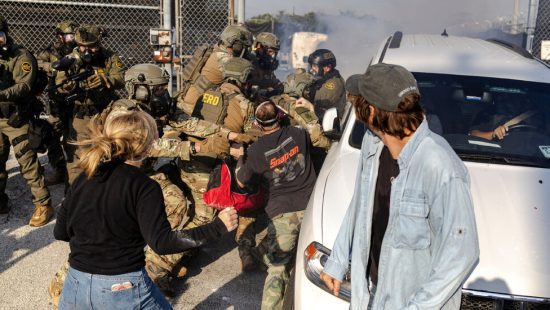The use of blind mules to sneak drugs into the U.S. is not a new tactic — and it’s also not one that is often publicly acknowledged by U.S. law enforcement. But in recent months, authorities on both sides of the border have issued warnings to frequent border-crossers about the potential danger.
In Tijuana, police have been highlighting cases of drivers who have realized something is amiss before they’ve reached the border crossing.
And in April, U.S. Customs and Border Protection’s San Diego office said it was trying to “raise public awareness about the growing threat of ‘blind mule’ drugs and human trafficking.”
Whether or not there is indeed such a growing threat is difficult to quantify, since it appears no one agency tracks every blind-mule case.
That’s largely because there are multiple ways that victims realize they’ve been used as a blind mule. Sometimes drivers in Mexico notice before they reach the border that their vehicle has been tampered with and they report that to Tijuana authorities; sometimes CBP officers find the drugs at the port of entry; and sometimes drivers find the drugs in their vehicles after they’ve already crossed into the U.S.
“Smugglers are continually developing new ways to bypass law enforcement,” Sidney Aki, director of field operations for CBP’s San Diego field office, said in the agency’s April statement. “They may secretly hide narcotics in rental cars, personal vehicles, or even convince people to carry packages across borders under false pretenses. Our goal here is to educate the public so they can avoid becoming victims.”
But whether or not blind-mule cases are on the rise is somewhat beside the point to Danni Iredale, a San Diego defense attorney. She said it’s important that everyone involved — from potential victims to law enforcement agencies to prosecutors and defense attorneys — recognize that blind-mule trafficking is one of the many tactics that drug traffickers have used and continue to use in the Tijuana-San Diego region.
“This has always happened, it continues to happen, and the same reasons exist,” Iredale, partner at the private firm Iredale & Roth, said in an interview. “Blind mules don’t know what they have, so they’re less likely to show signs of nervousness and more likely to pass inspection; they can’t steal the drugs; and they can’t point the finger to anyone else if they’re caught.”
Last week on Tuesday, the Tijuana Public Safety Department, which includes the Tijuana police, reported two apparent blind-mule cases within hours of each other.
One man waiting to cross the border from Mexico told a law enforcement officer near the Otay Mesa Port of Entry that he could hear a baby crying from the trunk of his Honda Accord. Upon inspection, Mexican police found a man, a woman and a roughly 1-year-old child, according to police. They were all from Vietnam. The driver told officials he did not know the trio.
Hours earlier, Tijuana police reported that a man had found a GPS tracker and three packages of drugs wrapped in black tape secured to the underside of his Ford Focus. Police said the man had been at a convenience store and checked underneath his car out of precaution, since he’d previously found a GPS device attached to his car.








